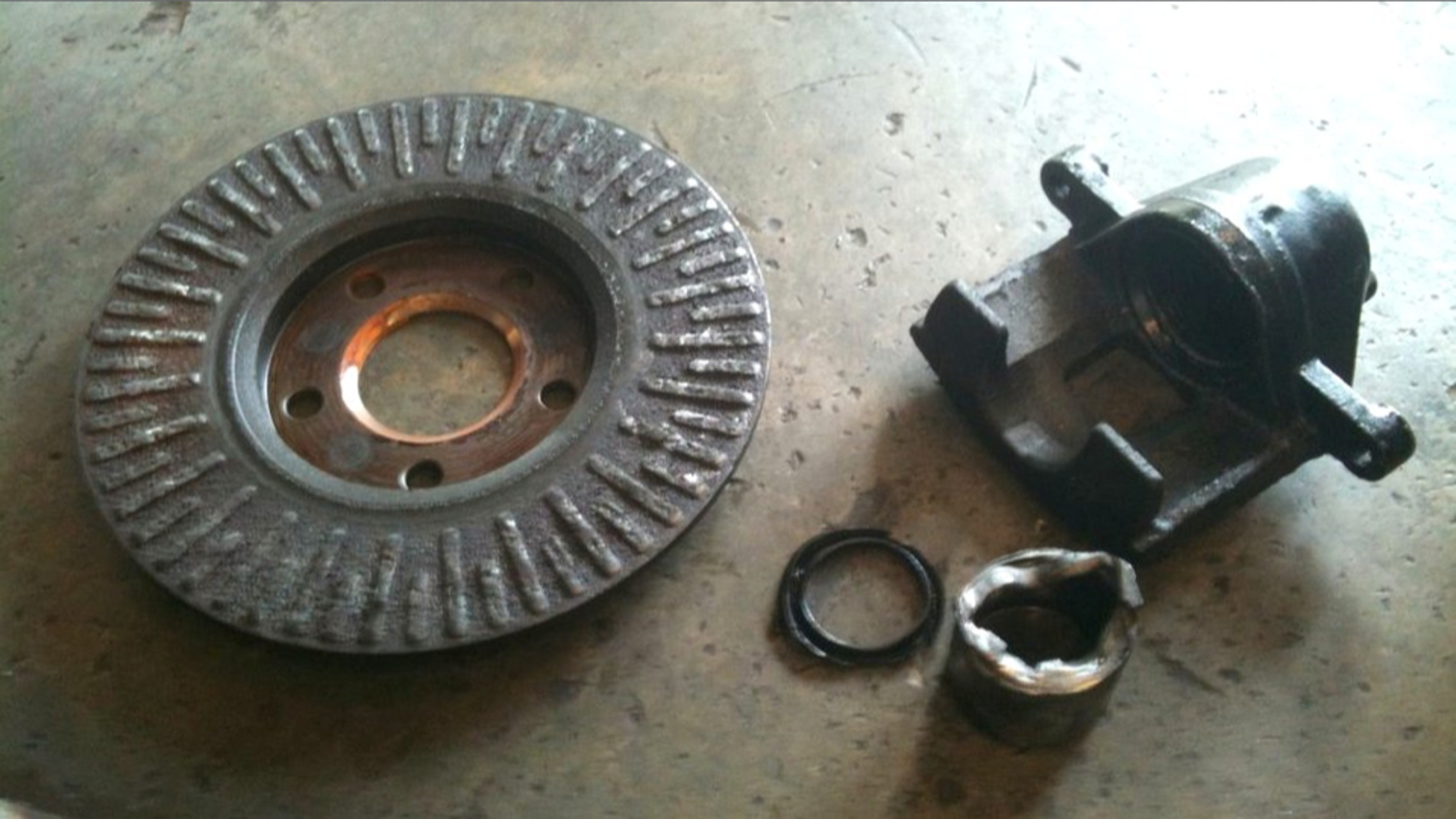
There is no reason to cycle the ABS if all you are simply trying to do is get vapor out of the calipers. If you are only replacing a caliper or performing any other operation where you are simply trying to bleed vapor and/or used fluid from the wheel-end components (like after a hard day of lapping,) you need only to bleed the brakes as you normally would.ala Step #1 above. Remember that this is the process for FLUSHING AND FILLING YOUR ENTIRE SYSTEM. You still need to bleed the car a second time, but it saves you from procuring the service tool. This is usually NOT the most efficient nor socially responsible solution, though it seems to work just fine. If you really feel the need to cycle the valves, but do not have access to a service tool (or if the dealer is not willing to loan theirs) you COULD just replace Step #2 above with "go driving and slam on the brakes a few times to make the ABS work" to purge the used fluid from the unit. But What If I Don't Have The Dealer Service Tool? If they claim that they need to cycle the ABS, it's a good bet that you need to also. Our advice? Make a phone call to your local service department asking what their procedure is to bleed the brakes WHEN A NEW ABS UNIT IS INSTALLED (as opposed to when they change a caliper). However, you cannot always rely on this generalization alone. In general, the most recent ABS product offerings - Bosch ABS5.7, Bosch ABS5.3, Delphi's DBC7 - all DO have the hidden passages and would require the procedure listed above. The last 25% of course is "does my car have these mysterious hidden passages?" That's for you to find out, but the following information should be useful in your quest for ABS knowledge.Īs with any technology, manufacturers have produced several types of ABS over the years, and listing them all is simply not possible. You end up having bled the system twice, but this is necessary to ensure that fresh fluid - and NOT used fluid - is drawn into the unit the next time that the ABS valves (and/or pump) are cycled. Step 3 - Manually bleed RR, LR, RF, and LF brakes again
#Anti lock brakes vs regular brakes install
Step 2 - Install service tool and cycle all valves and/or pumps Step 1 - Manually bleed RR, LR, RF, LF brakes The end result takes a little more time than a conventional bleed, and requires you use a little more fluid, but looks like this: Fresh fluid is then drawn into the ABS unit, and the old stuff can be flushed away with the rest of the mess. In effect, this allows you to open the hidden passages in order to purge the fluid completely.


With these systems, the correct way to bleed the ENTIRE vehicle is to employ a Dealer service tool (it usually looks like a Nintendo GameBoy) that allows you to cycle the ABS valves and/or the pump motor WHILE you are bleeding the brakes. Not the end of the world, but you want fresh fluid everywhere, right? The Factory Procedure However, as soon as the ABS cycled - even for a few tenths of a second - the "old" fluid (which was never bled because it was hidden) would be dumped into the primary circuit. Now, if you just bled your system per the above technique and never again cycled your ABS, you would be fine.

However, other ABS devices have their own internal reservoirs (Bosch ABS5.3, for example) that are not a part of the primary brake circuit and are only opened to the rest of the circuit when the ABS is active. Note that there are some special situations where the retailer will perform a diagnostic bleed of these early ABS units, but this is not within the scope of this article. Now, with some ABS devices, you are actually done no matter what (Delphi's early ABS VI, for example). Just follow the same steps you normally would for a non-ABS vehicle and you're most of the way there. This does not change whether you are pressure-bleeding, vacuum-bleeding, or manual-bleeding. In general, whenever you are bleeding an ABS-equipped vehicle you can do so exactly as you would any other vehicle - stroke the pedal to pressurize the system, open a bleeder, close the same bleeder, and repeat.


 0 kommentar(er)
0 kommentar(er)
